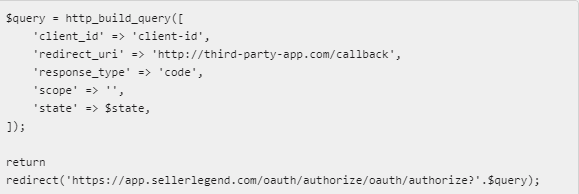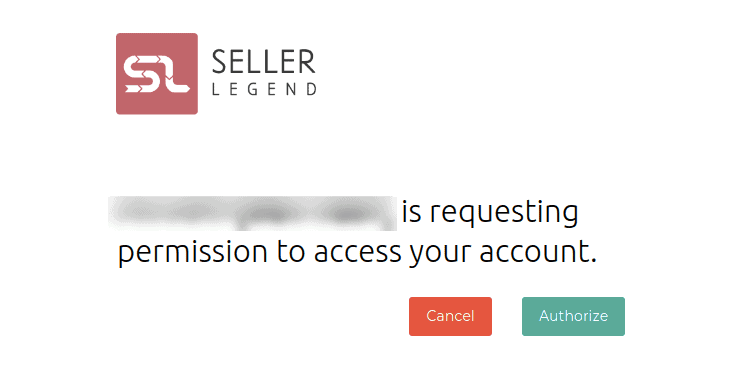🚀 What Is The SL API Used For?
- An API (Application Programming Interface) enables communication between applications.
- SellerLegend’s API lets your app connect directly to SellerLegend, allowing you to download SL data for custom use.
🛠️ Step-by-Step Setup Guide
1️⃣ Register Client on SellerLegend
-
Go to SellerLegend → Admin → Developers and register your application.
- Click on Create New Client
-
This generates a Client ID and Client Secret—credentials required for API access.
-
Guest users cannot register clients or make API calls.
2️⃣ Redirect for Authorization
-
SellerLegend uses the OAuth 2.0 authorization pattern.
- The consuming application is supposed to request an authorization code from SellerLegend.
- The consuming application should make a redirect request to SellerLegend
-
Redirect users to:
https://app.sellerlegend.com/oauth/authorize
using your Client ID, secret, and redirect URI.

3️⃣ Approving The Request
- When the SL application receives these authorization requests, it automatically displays a template to the user allowing them to approve or deny the authorization request.

-
If approved, they’ll be redirected to your application’s redirect URI (must match what you registered).
4️⃣ Converting Authorization Codes To Access Tokens
-
Verify that the returned state parameter matches your original request.
-
Send a POST request to
/oauth/tokenwith the authorization code. - The request should include the authorization code that was issued by SellerLegend when the user approved the authorization request.

-
Response includes:
-
access_token (expires in ~15 days)
-
refresh_token (expires in ~30 days)
-
expires_in (time in seconds before expiry)
-
⚠️ The auth code is single-use and expires in 10 minutes.
📚 What to Do Next
-
Explore all available endpoints via the SellerLegend Postman collection.
-
PHP developers can use the official SellerLegend PHP SDK to simplify integration.
- For examples please follow this Github link
- For mocked responses please follow this Github link
- The Official SDK is also installable as a composer package
